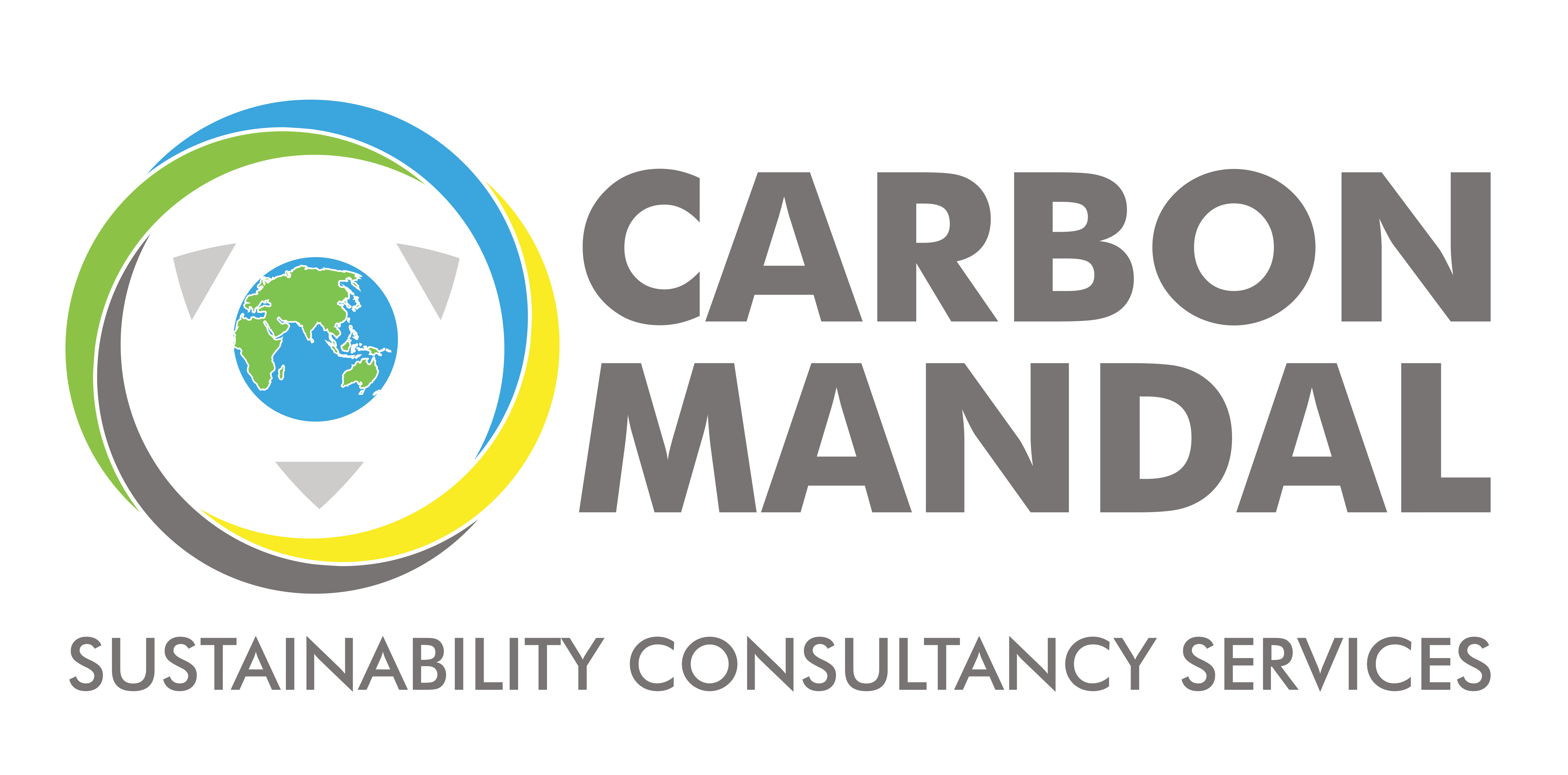Exploring the Role of Verified Carbon Standard (VCS) and Gold Standard in India’s Efforts to Combat Climate Change.
“Carbon, the currency of a new world order” (Paul Kelly, The Australian, 21 March 2007
Greenhouse gases, such as CO2, act as heat trappers, resulting in the “greenhouse effect” that ultimately warms the environment. In 2019 alone humans dumped 36.44 billion tonnes of CO2 which will be trapped in the atmosphere for centuries, increasing the global temperature higher than it was in at least 3 million years”. [9] In the ‘Special Report by IPCC 2018’, it is stated that human activities are the major causes of a 1.0°C increase in global temperatures above pre-industrial levels. According to the report, if the current rate of increase continues, it is likely that global temperatures will reach 1.5°C between 2030 and 2052, considering the available technologies for assessment.”[8]
As consumers and businesses around the globe are choosing environmentally friendly practices with the latest sustainable technologies. Promoting new technologies and novel business models and markets is a need of the hour to achieve climate change targets. As countries and businesses strive to reduce their carbon footprints, there is a need for a market tool that allows them to create and trade carbon credits. Carbon Credits are measurable, verifiable and tradable permits given to climate action projects. In addition to reducing greenhouse emissions from the atmosphere, these initiatives also empower people, safeguard ecosystems, revive forests, and reduce dependency on fossil fuels, among a host of other good outcomes. They are used as a mechanism to reduce greenhouse gas emissions by allowing organisations or individuals to offset their emissions by purchasing credits from projects that reduce or remove greenhouse gases from the atmosphere.
Carbon dioxide (CO2) emissions have an adverse effect on the environment and contribute to climate change, which is the foundation of the carbon credits. By creating a market for carbon credits, businesses and governments promote the advancement of renewable energy, energy efficiency, and other low-carbon technology.[2] With the current state of global climate change, carbon credits are becoming more and more significant. The article will explore the two major carbon credit standards available.
Introduction to Carbon Credit Standards
Carbon credit standards are a set of guidelines and criteria used to measure, verify, and certify greenhouse gas (GHG) emissions reductions or removals achieved through carbon offset projects. These standards ensure that the carbon credits generated by these projects are real, additional, permanent, measurable, and verifiable.[1] Globally the certificates and regulations to govern the market are done through third parties. In a few nations governments also have boards, programmes and laws to govern the market. In India, based on the Clean Development Mechanism, the CCSI(Carbon Credit Standards of India), provides a framework for businesses and organisations to measure, manage, and offset their carbon footprint by investing in renewable energy projects or implementing energy-efficient technologies. The CCSI is administered by various bodies in India, including the Ministry of Environment, Forest and Climate Change (MoEFCC), the National Accreditation Board for Certification Bodies (NABCB), and the Quality Council of India (QCI).
It is astonishing that the global carbon credit markets have increased 164% according to 2021 estimates. “It is also anticipated that the market valuation for carbon credits globally would reach $100 billion by the end of 2030.” [13] According to an article published in TOI by Bose Varghese, stated that in 2021 the voluntary carbon credit market globally reached the $ 1 billion mark and is expected to grow $50-$190 billion by 2030, closely achieving the 2030 target of ‘Net Zero’.[11]
Many carbon credit programmes have their own standards that serve as guidelines and criteria for projects utilising their system. Two such globally recognized standards are VCS and Gold Standards which “together commands more than 80% of credits being issued by voluntary standards.”[6]
Understanding Verified Carbon Standard (VCS)
This standard was developed in 2005 by the Climate Group and the International Emissions Trading Association (IETA). Through projects, it provides real, quantifiable, distinctive, and long-term carbon reductions. Credits are managed via registries, which are used to register, transfer, and retire Voluntary Carbon Units (VCUs). The VCS does not place greater attention on initiatives that are socially and environmentally beneficial, instead concentrating primarily on climate integrity and GHG emission reduction.[3] The project must be GHG approved, in accordance with ISO 14065:2007, in order to qualify for carbon credits under VCS.
It categorises the projects into three:
- Micro projects: under 5,000 tCO2e per year
- Projects that reduce: 5,000–1,000,000 tCO2e per year
- Megaprojects: greater than 1,000,000 tCO2e per year [4].
The VCS encompasses a variety of project types, including those involving industrial and agricultural operations, renewable energy, energy efficiency, afforestation, and reforestation. Companies, governments, and people that want to offset their carbon emissions can purchase the carbon credits produced by these projects on the voluntary carbon market. All projects that are registered are subject to rigorous auditing by VCS members, and a third party evaluates the accuracy of emission reduction calculations in compliance with ISO 14064-3:2006 standards. Following the International Carbon Reduction and Offset Alliance (ICORA) code of conduct and being the most popular GHG crediting programme in the world, VCS has effectively eliminated 1.1 billion tonnes of GHG from the atmosphere [12].
In May 2023, the CEO of Verra, David Antonioli, stepped down following an investigation conducted by The Guardian, Die Zeit, and SourceMaterial. The investigation raised concerns about the effectiveness of rainforest credits issued by Verra, which were utilised by major corporations such as Disney, Shell, and Gucci. It found that some of these credits were based on the protection of rainforests that were not genuinely at risk. The investigation also highlighted instances of forced evictions related to a Conservation International-operated project in Peru.[16]
In response to these findings, Verra has announced its plans to implement new regulations for the production of carbon credits from tropical rainforests. It is expected that all projects will be required to adhere to the new methodology by mid-2025. Subsequently, some companies, including Gucci, have made the decision to remove carbon neutrality claims associated with offsetting projects from their websites.[16]
Gold Standard for Carbon Credits
Launched in 2003 under the leadership of the World Wildlife Fund, HELIO International and South North NGOs as a voluntary carbon offsets program. This standard verifies projects that take into account holistic development (environment, social and community economy) aspects. Projects that successfully satisfy strict requirements for GHG reduction, sustainable development, and stakeholder participation are given the Gold Standard accreditation. In this changing market Gold Standards ensures that projects must be resilient, and relevant and can change themselves according to the changing policies. This standard’s flexibility in allowing users to select between carbon credits and additional certification options, such as certified emission reduction declarations, might be an intriguing feature for project developers looking to reduce the possibility of double counting.[7]
With $36 billion of shared value creation GS currently has 2900 ongoing projects in over 100 countries. The completed projects have in total successfully reduced 308 million tons of CO2.[7]
By the end of 2022, Gold Standard will have distributed a total of 238 million carbon credits, with 98.2 million credits coming from projects located in the Asia-Pacific region and the remaining credits distributed across over 100 nations.
The Indian Need for Standardised Carbon Credit System
As a significant exporter and producer of carbon credits India plays a crucial role in the global carbon credit market. It issued 278 million credits in the voluntary market which is 17% of the global supply.[13] This brings us to the need for an Indian standard for a carbon credit system which will help India to avert a loss of $35 tn owing to unmitigated climate change over the next 50 years. [14]
Currently, Indian carbon credits earned through CDM (Clean Development Mechanism) are traded in the international carbon market. To achieve its goal of becoming carbon neutral by 2070, India does not have an official standard or market for domestic carbon trading. As there is an increase in Indian industries participating in carbon offsetting initiatives, a standardised verifying system would ensure transparency and credibility in assessing and validating carbon credits. This system would enable accurate quantification of emission reductions, facilitating the trading and utilisation of carbon credits both domestically and internationally.
The Energy Conservation (Amendment) Bill 2022, is one of the bills which state the carbon trading schemes, providing the power to the central government to regulate and specify such schemes. In March 2023 the Ministry of Power proposed a draft. A blueprint that states the Bureau of Energy Efficiency will in addition to serving as secretariat for the Indian Carbon Market Governing Board (ICMGB), will carry out a number of duties, such as creating procedures and standards for registering projects under a voluntary system and formulating goals and objectives for the organisations covered by the compliance mechanism. Additionally, the Bureau will create market stability mechanisms for carbon credits and issue Carbon Credit Certificates (CCC).[15] Abhay Bakre, the director general of the Bureau of Energy Efficiency, states that “India is on course to announce the details of a national carbon market scheme in June, with each element of the market to be consulted and finalised before trading could start by 2025”[13]
As carbon credit becomes a medium to capitalise the climate offsets projects and enhances the economy and environment. What are your thoughts on the importance of standardisation of the carbon credit system for Indian offset projects? Write to us at info@carbonmandal.com and let us know!
List of references
- Climate Focus (2022) Chapter 7: What is the role of carbon standards in the voluntary carbon market?, vcmprimer.org. Available at: https://vcmprimer.org/chapter-7-what-is-the-role-of-carbon-standards-in-the-voluntary-carbon-market/#:~:text=What%20are%20%20carbon%20%20standards%3F,credits%20are%20generated%20and%20issued.%20(Accessed:%2001%20May%202023).
- Yarlagadda, K. (2022) Carbon credits and India’s carbon market, Deccan Herald.
https://www.deccanherald.com/science-and-environment/carbon-credits-and-india-s-carbon-market-1163828.html
- Carbon Offset Guide (2020) Protocols & standards, Carbon Offset Guide. Available at: https://www.offsetguide.org/understanding-carbon-offsets/carbon-offset-programs/protocols-standards/ (Accessed: 19 May 2023).
- Anja Kollmuss, Helge Zink & Clifford Polycarp (2008) GCP : Global Carbon Project : Homepage. Available at: https://www.globalcarbonproject.org/global/pdf/WWF_2008_A%20comparison%20of%20C%20offset%20Standards.pdf
- Chacko, M. (2022) Carbon credits: An overview – renewables – india, Carbon Credits: An Overview – Renewables – India. Available at: https://www.mondaq.com/india/renewables/1241216/carbon-credits-an-overview (Accessed: 01 May 2023).
- https://www.iexindia.com/pdf/Innovation-april-june-2022.pdf
- The Gold Standard Grow to zero conference, The Gold Standard. Available at: https://www.goldstandard.org/ (Accessed: 25 May 2023).
- IPCC (2018) Summary for policymakers, Global Warming of 1.5 oC. Available at: https://www.ipcc.ch/sr15/chapter/spm/ (Accessed: 24 May 2023).
- 25, S.F. |February et al. (2021) How exactly does carbon dioxide cause global warming?, State of the Planet. Available at: https://news.climate.columbia.edu/2021/02/25/carbon-dioxide-cause-global-warming/#:~:text=As%20CO2%20soaks%20up%20this,contributing%20to%20the%20’greenhouse%20effect. (Accessed: 25 May 2023).
- Chandaria, K. et al. (2021) The next generation of climate innovation, BCG Global. Available at: https://www.bcg.com/publications/2021/next-generation-climate-innovation (Accessed: 24 May 2023).
- Singh, R. (2023) India may announce details of National Carbon Market Scheme in June: Official, S&P Global Commodity Insights. Available at: https://www.spglobal.com/commodityinsights/en/market-insights/latest-news/energy-transition/031723-india-may-announce-details-of-national-carbon-market-scheme-in-june-official (Accessed: 28 May 2023).
- Confederation of Indian Industry (2023) Indian Carbon Credit Market, Ciiblog.in. Available at: https://www.ciiblog.in/indian-carbon-credit-market/#:~:text=This%20is%20evident%20by%20the,carbon%20market%20credits%20issued%20globally. (Accessed: 01 May 2023).
- Pandey , K. (2023) India prepares for a domestic carbon market with release of a draft carbon trading scheme, Mongabay. Available at: https://india.mongabay.com/2023/04/india-prepares-for-a-domestic-carbon-market-with-release-of-a-draft-carbon-trading-scheme/ (Accessed: 02 May 2023).
- Greenfield, P. (2023) CEO of Biggest Carbon Credit Certifier to resign after claims offsets worthless, The Guardian. Available at: https://www.theguardian.com/environment/2023/may/23/ceo-of-worlds-biggest-carbon-credit-provider-says-he-is-resigning (Accessed: 05 June 2023).

